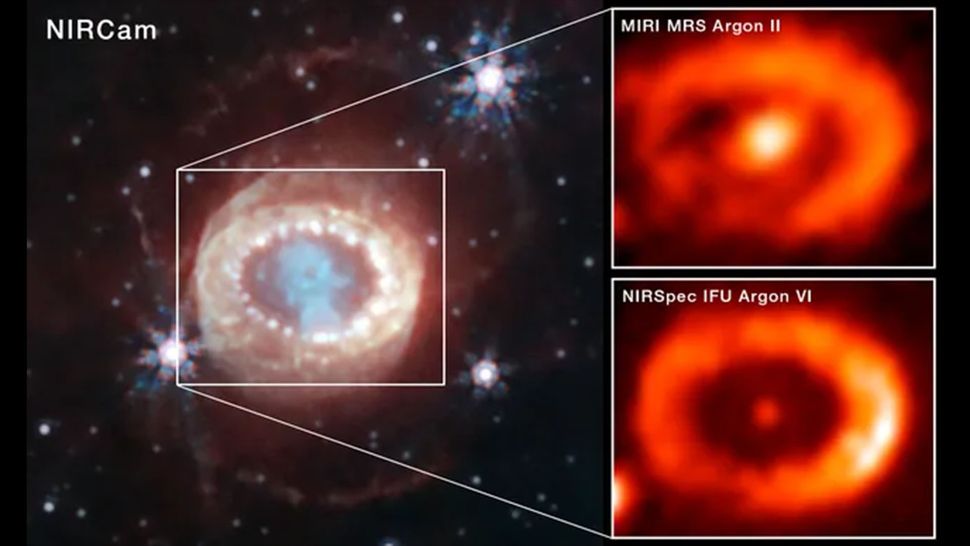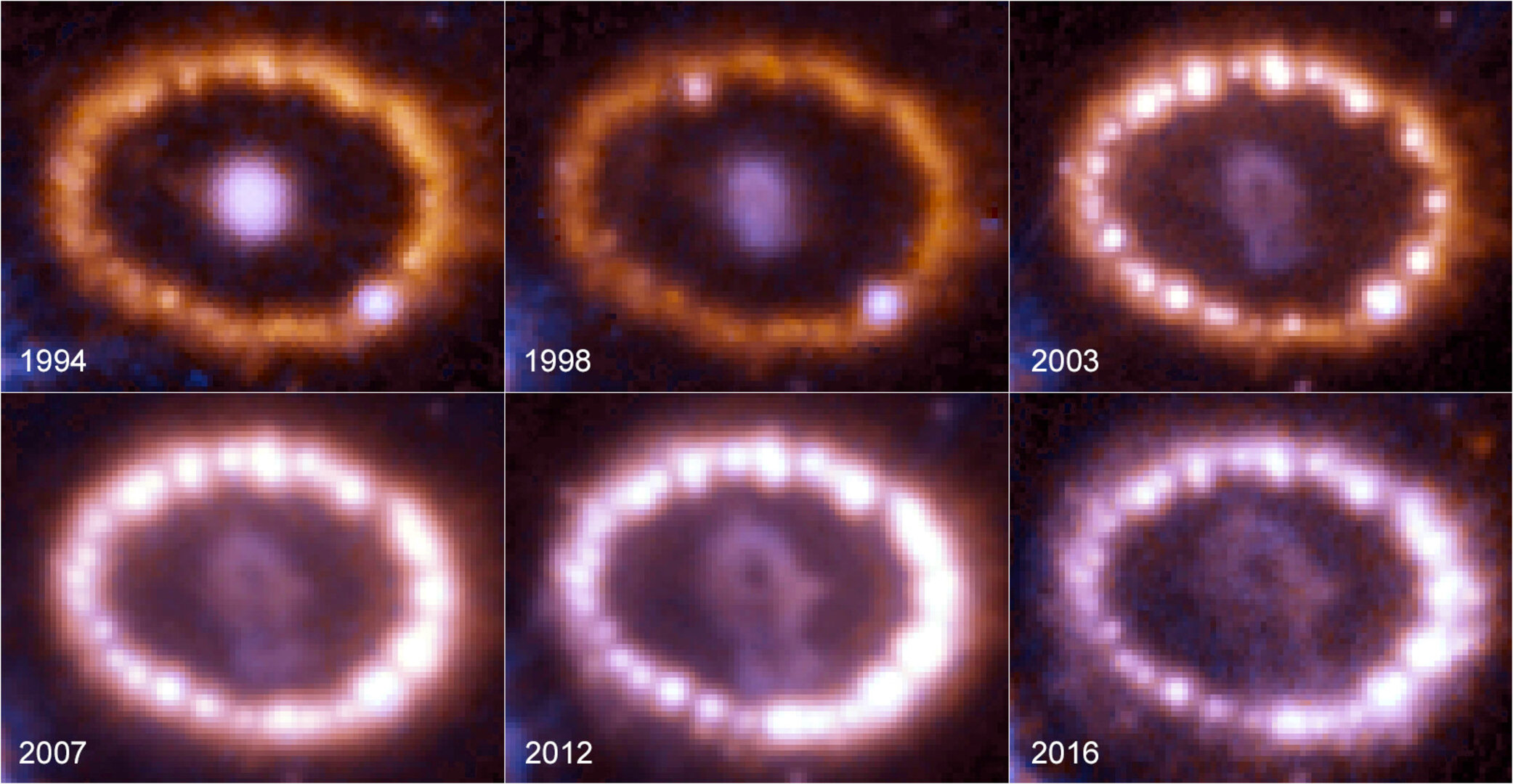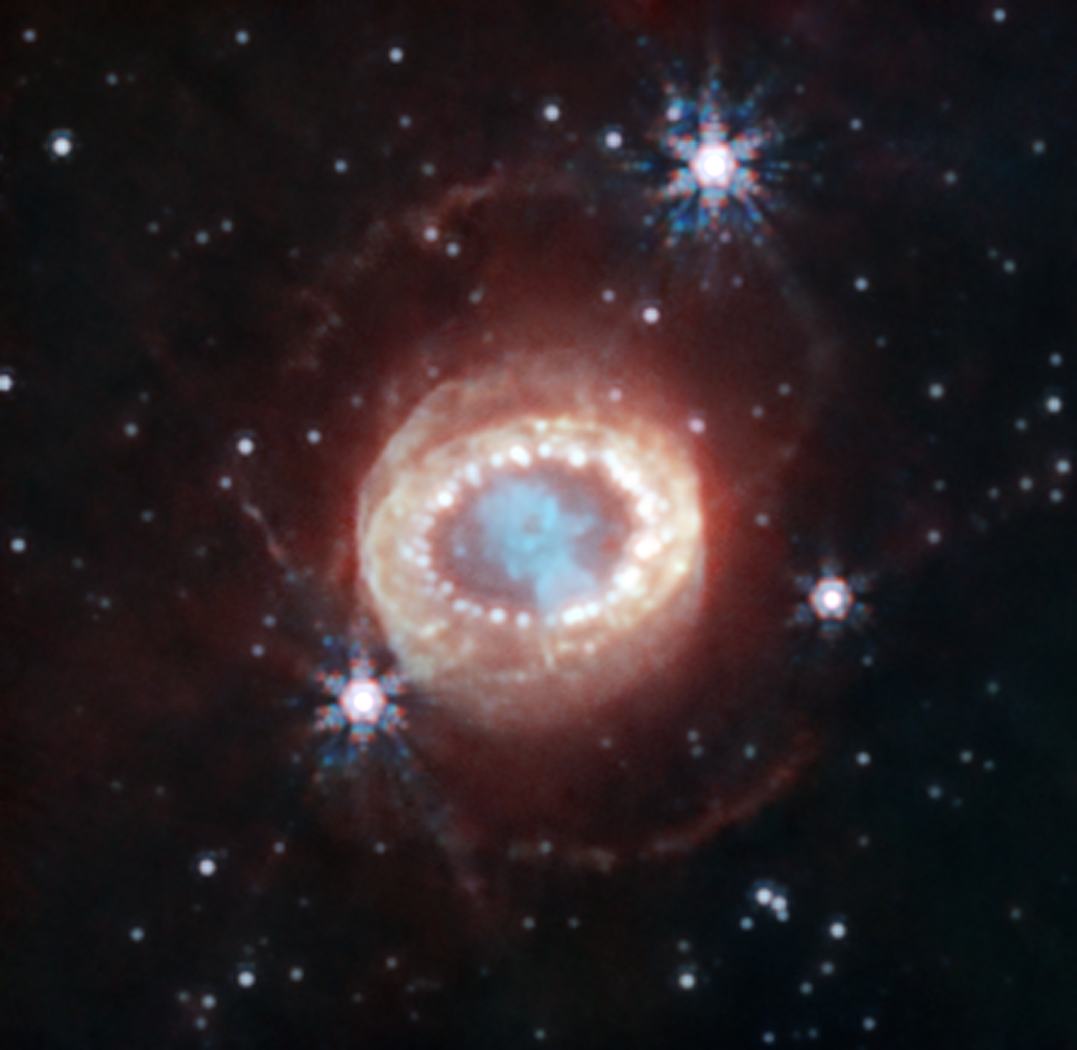Science
Related: About this forum'Finally, we have the evidence': James Webb telescope spots neutron star hiding in wreckage of famous 1987 supernova
By Robert Lea( space.com ) published February 26, 2024
A neutron star spotted by the James Webb Space Telescope stayed hidden for 37 years while lurking in the wreckage of a stellar explosion, Supernova 1987A.

The NASA/ESA/CSA James Webb Space Telescope has observed the best evidence yet for emission from a neutron star at the site of a well-known and recently-observed supernova. The supernova, known as SN 1987A, occurred 160,000 light-years from Earth in the Large Magellanic Cloud. (Image credit: NASA, ESA, CSA, and C. Fransson (Stockholm University), M. Matsuura (Cardiff University), M. J. Barlow (University College London), P. J. Kavanagh (Maynooth University), J. Larsson (KTH Royal Institute of Technology))
Using the James Webb Space Telescope (JWST), astronomers have ended a nearly decade-long game of celestial hide-and-seek after they discovered a neutron star in the wreckage of a stellar explosion.
Supernova 1987A represents the remains of an exploded star that once had a mass around 8 to 10 times that of the sun. It is located around 170,000 light-years away in the Large Magellanic Cloud, a dwarf galaxy neighbor of the Milky Way. Supernova 1987A was first spotted by astronomers 37 years ago in 1987, hence the numerical aspect of its name. As it exploded, Supernova 1987A first showered Earth with ghostly particles called neutrinos and then became visible in bright light. This made it the nearest and brightest supernova seen in the night sky over Earth for around 400 years.
Supernova explosions such as this are responsible for seeding the cosmos with elements like carbon, oxygen, silicon and iron. These elements ultimately become the building blocks of the next generation of stars and planets, and can even form molecules that may one day become integral to life as we know it. These explosions also birth compact stellar remnants either in the form of neutron stars or black holes; for 37 years, astronomers haven't known which of these may lurk at the heart of Supernova 1987A.
For a long time, we've been searching for evidence for a neutron star in the gas and dust of Supernova 1987A," Mike Barlow, an emeritus professor of physics and astronomy and part of the team behind this discovery, told Space.com. "Finally, we have the evidence that we've been seeking."
More:
https://www.livescience.com/space/cosmology/finally-we-have-the-evidence-james-webb-telescope-spots-neutron-star-hiding-in-wreckage-of-famous-1987-supernova



SWBTATTReg
(22,133 posts)Ahhh, the universe and its mysteries. Always neat reading, and a break from the politics of the day. Thanks for the FYI.
Mistwell
(569 posts)Just a weird cool image. Looks like a giant big blue crying baby in the middle.
Thank you for posting this. Always great science news here.